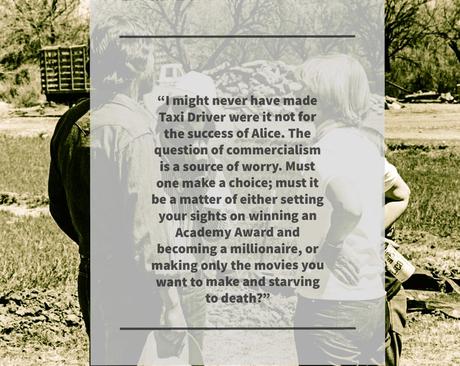
Martin Scoresese's films have inspired a great many things, but a workplace sitcom and TV catchphrase wouldn't seem to be on that list. Yet, that's exactly what happened in 1976 when CBS adapted the director's anti- A Star is Born drama Alice Doesn't Live Here Anymore into the TV series Alice. It's about a single mother's waitressing misadventures at Mel's Diner on the outskirts of Phoenix, Arizona, but even though Alice's story ultimately played out over 9 seasons the show's still best remembered for consummate scene-stealer Polly Holliday, whose Texas-born waitress Flo gave the world the immortal catchphrase "Kiss my grits!"
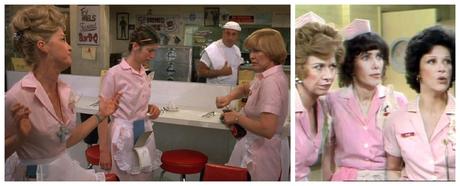
Perhaps because of its popular TV show companion, Alice Doesn't Live Here Anymore has disappeared into the ether of film history. It's that domestic drama Scorsese did back in the day, one of his few films about women. Based upon my discussions with cinephiles, you're more likely to have faintly heard of Alice Doesn't Live Here Anymore than to have actually seen it. That certainly describes my situation. Thankfully, however, the movie is currently available on Netflix. I set aside a couple of hours to give it a look. Before getting into my reaction, I want to first explain why I am even doing this mini-Scorsese marathon this month:
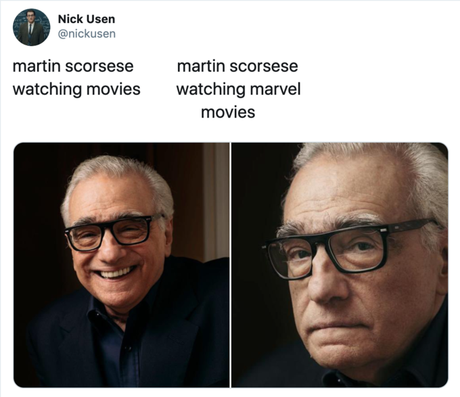
Martin Scorsese's verbal assault on the Marvel Cinematic Universe might have been the definition of an "ok, boomer" moment. Here was a silver-haired old man openly admitting he didn't understand the most popular movies of the day and didn't much like the change they had brought to the film industry. It was the old telling the young, "Look what you've ruined." At the risk of oversimplified what is actually a nuanced debate, the obvious response is: Um, ok, boomer.
The argument has splintered off into innumerable directions since then. It will likely continue to do so for several more news cycles because Scorsese is still out there promoting his new Netflix movie, The Irishman, and the media will still ask him and every other filmmaker imaginable for further hot takes on the subject, anything it takes to activate users on social media. As we've seen on the political side of things, that's just how the world works today, everyone stuck in constant react mode to the latest outrage. As The Morning Show's Billy Crudup so memorably put it, "Chaos is the new cocaine."
One line of thought in any such debate is to disregard the substance and discredit the author. Thankfully, I haven't seen an overwhelming amount of that going on here. That's because it's hard to dispute Scorsese's bonafides as a filmmaker. He truly is one of the greatest to ever wield a movie camera. However, that doesn't mean there haven't been any attempts to discredit the man. The ones I've seen usually go something like this: who is he to criticize Marvel movies for their lack of growth when he's been remaking the same movie for the past half century?
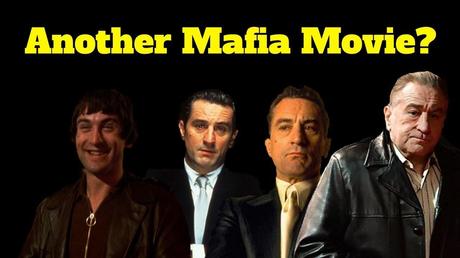
This particular take on Scorsese is that you can draw a direct line from Mean Streets all the way to The Irishman and argue all he does is make tough guy-mobster movies, as if his whole career amounts to him pointing a camera at Robert De Niro cosplaying as a gangster. It's really more like Scorsese returns to that genre at tentpole moments in his career and fills the in-between spaces with unpredictable experiments. Who else could follow up Goodfellas with Cape Fear and The Age of Innocence and then follow that up with a run of Casino, Kundun, and Bringing Out the Dead?
Still, like most iconic directors he is consistently drawn to certain themes, locations, ideas, and characters. Religious faith is an obvious source of fascination ( Last Temptation of Christ, Kundun, Bringing Out the Dead, Silence). Masculinity and alienation often fall under his microscope ( Taxi Driver, most obviously). New York constantly beckons ( Mean Streets, Taxi Driver, New York, New York, After Hours, The King of Comedy, Goodfellas, Bringing Out the Dead, Gangs of New York, The Wolf of Wall Street).
What I've been trying to do this month, in anticipation of The Irishman, is to explore Scorese's range and lesser-known projects. It's both an effort to celebrate the man and push back on the narrative that all he does is remake the same movie once or twice every decade. I started with Boxcar Bertha, his B-movie answer to Bonnie & Clyde. Julianne took it from there and rejoiced in the pained pauses throughout Age of Innocence. That's two Scorsese movies primarily about women, which is usually something he's criticized for doing enough of. Based on what he does with Patricia Arquette in Bringing Out the Dead, you can see his struggles in this area. He's never been better at it, though, than Alice Doesn't Live Here Anymore.
What's It About?

Think of A Star is Born - any version - but as a prequel. Or Coal Miner's Daughter before Sissy Spacek ever gets anyone to listen to her song. Or The Thing Called Love if River Phoenix and pals were all in their mid-30s instead of early 20s. Or Wild Rose before Jessie Buckley's mother-of-two ever fronted her own band at the local pub. Or Once if...
You get the idea. Basically, think of any ole movie about an aspiring singer. Then strip away the usual plot points - They're so talented! All they need is one lucky break to finally make it! They're living the lives they sing about in their songs! The magic and power of falling in love while making art together! - and what do you have left? Alice Doesn't Live Here Anymore, that's what.
It's the story of a newly-widowed 35-year-old mother (Ellen Burstyn, fresh off her Oscar-nominated turn in The Exorcist) who doesn't quite sing with the grace and range she used to but can't let go of her childhood dream of making it big. Her ceiling is probably singing in piano bars whose owners are sympathetic to her tale of woe, but, hey, at least that gets her foot in the door. Now if only the guys at the bar would stop hitting on her maybe somebody important would discover her.
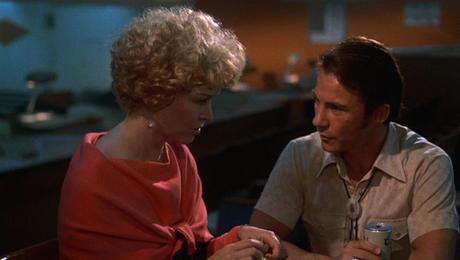
She has a chronic habit of picking the wrong man, and her choices in that area are even more limited by the presence of her mouthy 12-year-old son, whom she loves dearly but openly acknowledges as being "a spooky kid."
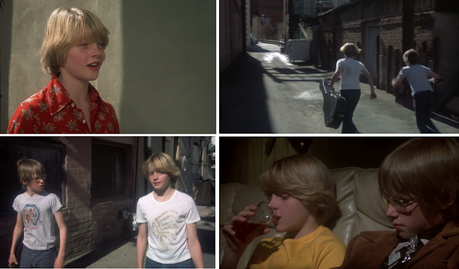
So, Alice travels through New Mexico and Arizona in search of her big break. The goal is to at least make it to Monterey because that's where she remembers being happy as a child. However, as she settles into a life as a waitress and starts falling for quite possibly the first decent man (Kris Kristofferson, 2 years before co-starring with Babs in their own A Star Is Born) she's ever met she has to figure out what true happiness really looks like.
Scorsese's Take
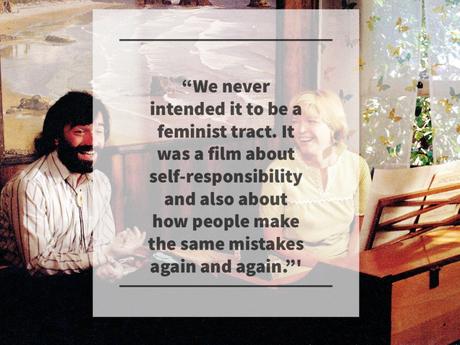
How It Got Made
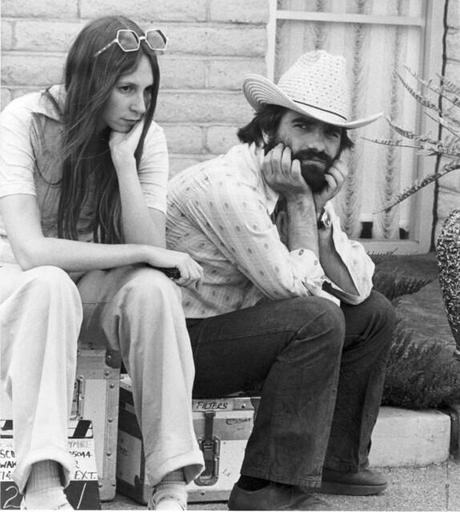
The story goes that when Scorsese was first approached about directing Alice Doesn't Live Here Anymore, his response was quite simple and rather candid: "I don't know anything about women."
It was the mid-70s. He was newly divorced, constantly arguing with his girlfriend Sandy Weintraub, and fresh off a box office flop, Mean Streets. Alice wasn't something he'd developed. That work had been done by Ellen Burstyn, screenwriter Robert Getchell, and Warner Bros.' head of production John Calley. Scorsese was only on their radar because he came recommended by Francis Ford Coppola, who told Burstyn to see Mean Streets for a sampling of the director's work. She was impressed by the freeness in the performances and wanted him to help her achieve the same thing with Alice. They got there together, and the reward at the end was Burstyn winning Best Actress, which Scorsese ended up accepting on her behalf.
That, of course, was the end result. To get to that point Scorsese had to first be convinced he was the right man for the job. At Burstyn's urging, Calley had sent Scorsese the Alice script, but it had to go through Weintraub first since she'd been hired to sift through all of the scripts coming the director's way. Thankfully, amongst a pile of Mean Streets knock-off scripts about mobsters Alice stood out to Weintraub as the only script with actual characters.
This led to a pitch meeting attended by Burstyn, Calley, Weintraub and Scorsese. He pleaded he knew nothing about women. "Women are just people," was Weintrab's matter-of-face response.
True enough. And there was something to Alice's journey which resonated with him. Her sassy rapport with her son immediately reminded him of his own mother. Her struggle to break the cycle of poor romantic choices mirrored his own since everything which doomed his marriage was happening all over again with Weintraub. And Alice's waffling over whether you should choose practicality instead of wild-eyed dreams spoke directly to his uncertainty over how to move on after Mean Streets.
Thus, Alice Doesn't Live Here Anymore was his chance to make a movie within the system, bringing his own style to a commercial product just like the studio directors of old while also finding something personal in the story. So, he moved forward on Alice with the hope that he could bring the story to life, and though they shot predominantly on location in Arizona he managed to recruit an old Citizen Kane designer to help construct a farmhouse on an old Columbia soundstage for an impressionistic prologue depicting a young Alice coming home at sunset like Dorothy from Oz.
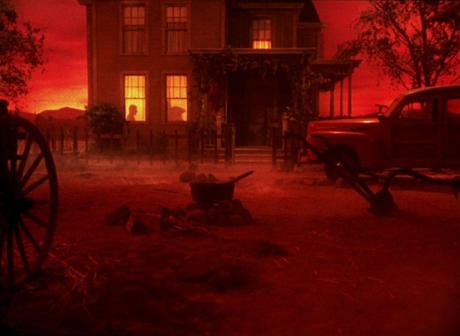
Still, Scorsese didn't really know anything about women. That's why he wanted as many women in positions of power on the project, hiring Weintraub to produce, Toby Rafelson to handle production design, and Marcia Lucas to edit. He even invited Burstyn into the editing process. When she offered the note that the entire first hour exploring Alice's relationship with her husband needed to be trimmed dramatically since it kept hitting the same note over and over again and just prolonged the true story - Alice and her son on the road - from taking off the young director was incensed. "I will never again let an actor into the editing suite," he said.
She was right, though. By the time the film was finished, that first hour had been cut to its bare bones, getting the husband out of the picture as fast as possible. Scorsese learned to take the note, and Alice is the better for it.
What the Critics Said At at The Time
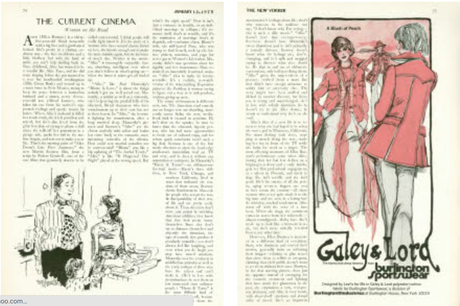
Pauline Kael: "A runaway movie. Scorsese seems to have let the characters go loose; the camera is hyperactive, tracking them."
What I'll Say Now
Alice is a lovely film about everyday people and emotions. That is not normally Scorsese's thing. So, Alice is a calm drama directed by a hypercaffeinated man who goes looking for reasons to keep the camera moving. That combination could be fatal, but, miraculously, it completely works here, largely because Scorsese knows when to back off. Yes, there are occasional handheld camera continuous takes that draw attention to themselves, not always for the better, but that goes along with wonderful moments where Scorsese merely observes as his actors improvise naturalistic dialogue, like when Alice and her man joke after having sex for the first time.
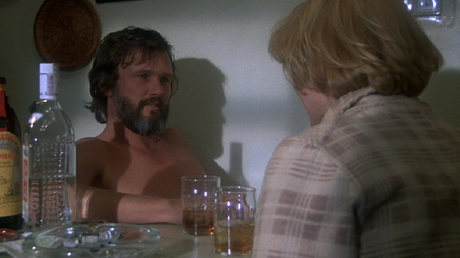
When watched today, Alice feels like a product of its era, an entirely New Hollywood kind of movie about ordinary people filmed in fascinating ways. Scorsese's opening scene, for example, of a young Alice play acting as an old Hollywood heroine on a clearly fake set with oppressive red lighting is transparently false. Everything about it looks like an old movie set, but intentionally so. It's Scorsese both nodding toward and deconstructing the past, introducing us not just to a small town girl with big dreams but a girl who grew up on all those old movies. Alice probably pictured herself as the girl in the movie countless times, entitled to her dreams and stardom, but as an adult she's only seen in naturalistic settings and we come to realize she's clueless how to transfer her dreams into reality.
Scorsese doesn't do this in a Tarantino, meta way. The adult Alice doesn't obsessively reference films. Instead, she simply talks like someone who's been cooped up as a housewife for too long and could only experience life through TV. It's no wonder she eventually became a sitcom character - she already talks like one in the movie, quick with self-effacing punchlines and happily settled into an Abbott & Costello-patterned jokey routine with her son, who is equally game. The two of them turn Alice into that rarest of rare film stories: a buddy road movie about a mother and her son.
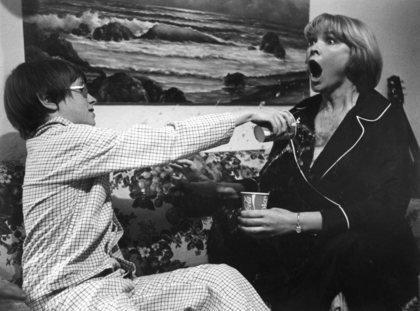
Ellen Burstyn never misses on the jokes, but also crucially nails the quiet moments where Alice's self-doubt creeps in, like when she says all the rights to her son about things working out but can't hide the desperation on her face. When she falls into a relationship with Keitel's character, you know she's repeating the same mistakes since her deceased husband was such an asshole. By the third act, you're rooting for her to break the cycle, and you really, really hope Kristofferson's character is exactly who he appears to be: an imperfect, but kind and supportive partner.
Still, this is a movie about a singer in search of her dreams, but what do you do when you can't actually sing like Peggy Lee or Dolly? And what do you do when you finally realize a man won't solve your problems?
Those are the two central questions of Alice Doesn't Live Here Anymore. Don't go into it, however, expecting the story to actually come up with solid answers. Instead, enjoy the sight of Ellen Burstyn muddling through life somehow in search of a second shot at happiness.
Parting Scorsese Quote with Current Resonance
